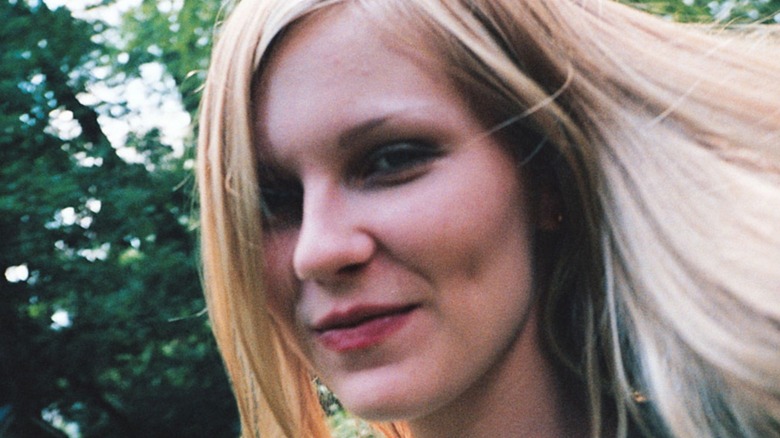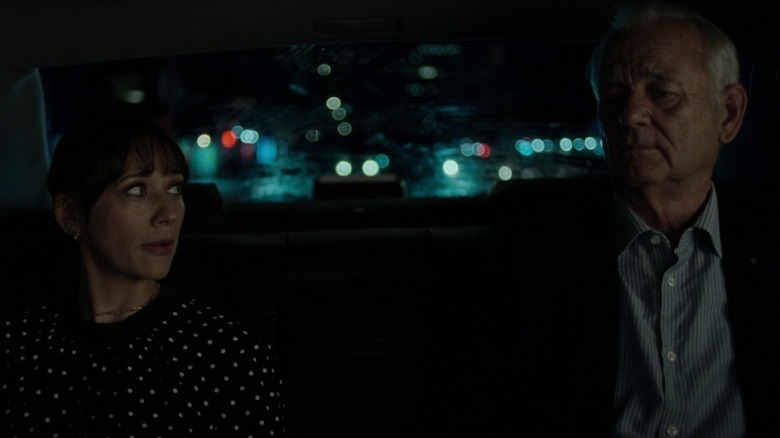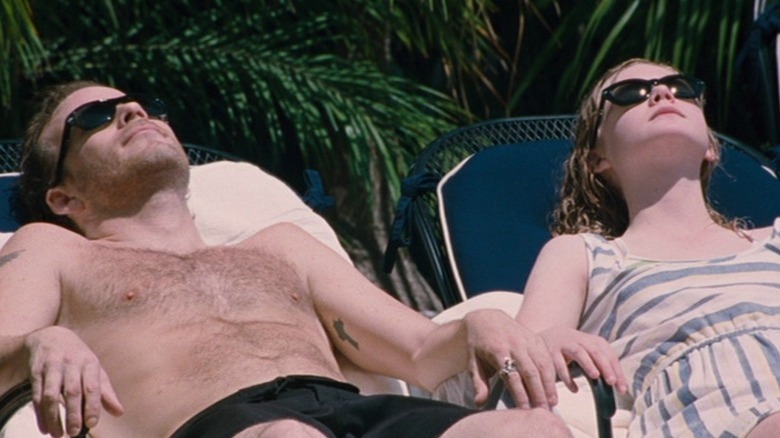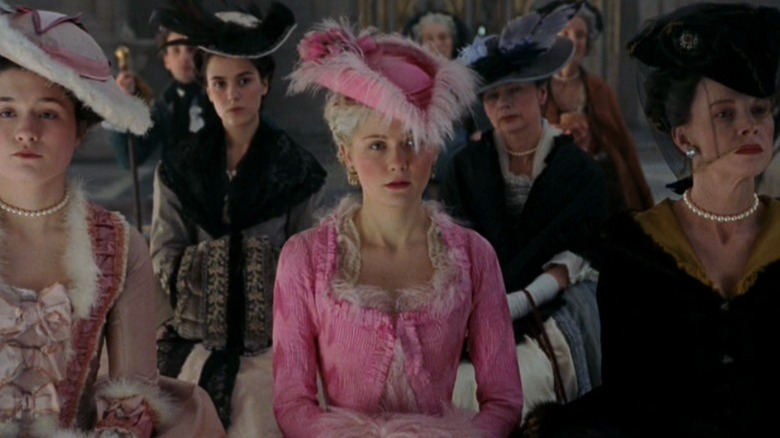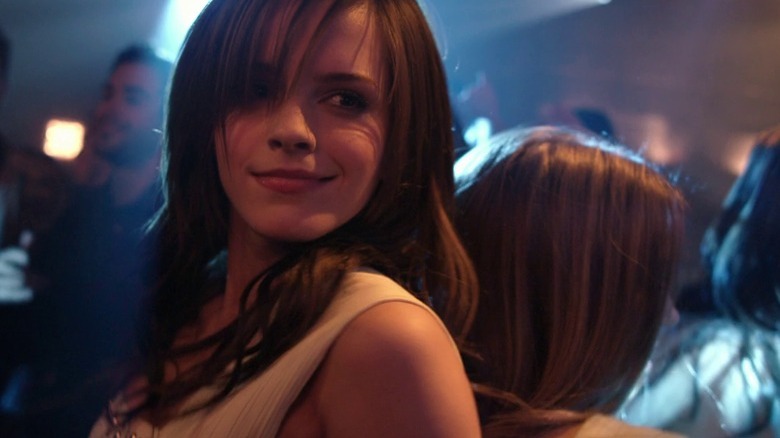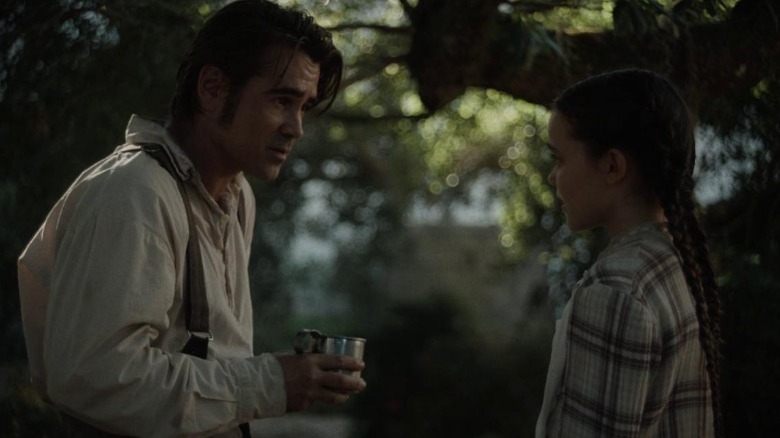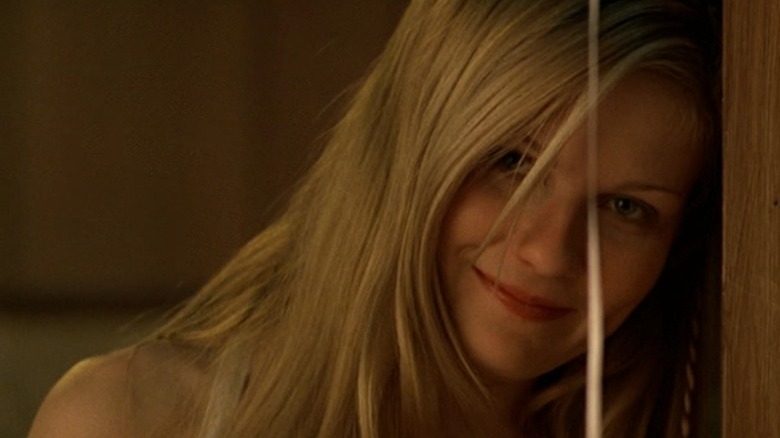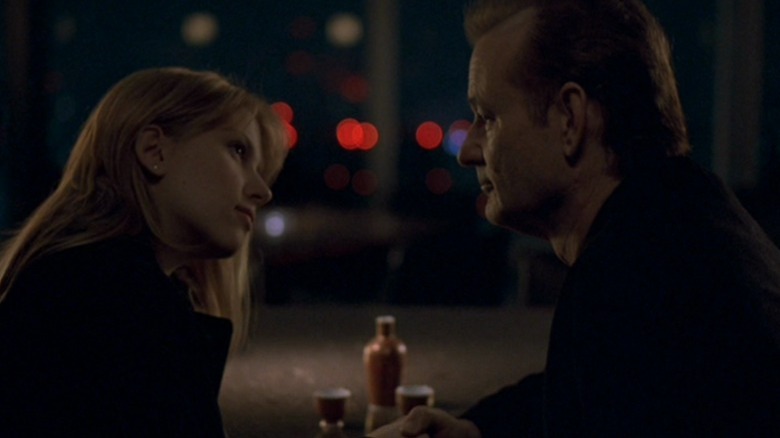Every Sofia Coppola Film Ranked From Worst To Best
Sofia Coppola is an auteur. While the usefulness and validity of that term is up for debate, Coppola is a director that fits that description completely. Her films have a particular look, one that you can recall simply by hearing her name, and share many common themes. Coppola likes how the sun looks as it peeks through the leaves. She lingers on her characters' inner lives, and she finds herself returning again and again to the topic of fame, illuminating both its pressure and its allure.
Much has been said about Sofia Coppola's family, and while it's impossible to separate her career from her father's, her talent is undeniable. Like the best artists, Coppola's work is not for everyone. While her films vary in quality, they're usually leagues above the movies playing at your local theater. Coppola handles everyday topics with curiosity, and treats teenage girls with reverence. She respects her audience — or might not even think of them at all, making films only for herself. Either way, the end results are movies that serve as sources of endless conversation. The film ends, but Coppola's work lingers. Here are all of Sofia Coppola's films, ranked from worst to best.
7. On The Rocks
"On The Rocks" reunites Coppola with Bill Murray, and for that reason alone it's worth a watch. The film follows Laura (Rashida Jones) who reconnects with Felix (Bill Murray), her estranged father, after growing suspicious of her husband's behavior (Marlon Wayans). Laura is an author and is stuck in a creative and marital rut. With nothing better to do, she begins to believe that her husband is cheating on her. Her father, a playboy, convinces her that she's right.
"On The Rocks" is a midlife crisis movie, one that has fun with the schemes that the father and daughter come up with, and the places where they unexpectedly end up. The chemistry between Murray and Jones is great, although at times it's tough for Jones to keep up with her counterpart due to a mix of the script and Bill Murray's sheer magnetism. It's an okay film, although it's simpler than Coppola's other work. Despite featuring a great Bill Murray, who is grating and heartbreaking when needed, the film is too clear cut, and the conflict resolved too neatly. It's the one Coppola film that feels superficial, and even a little privileged, as if she really believes that life's problems can be resolved with Cartier jewelry.
6. Somewhere
The relationship between fathers and daughters is a topic that Coppola keeps coming back to. "Somewhere" is about Johnny Marco (Stephen Dorff) a hotshot movie star who's unexpectedly tasked with taking care of his 11-year-old daughter, Cleo (Elle Fanning). It's a film that can't help but remind you of Coppola's personal life and her relationship with her own father, Francis Ford Coppola, one of the most emblematic figures of '70s Hollywood.
"Somewhere" is one of Coppola's quietest films. As someone who has minimalism drilled into her bones, Coppola fully succumbs to her impulses with "Somewhere," which, ironically, feels at times like it's going nowhere. But that's kind of the point. It's a polarizing film, one that's a lovely character study, with the repetitiveness keenly reflecting the life of its protagonist. Hollywood is obsessed with movies about the entertainment industry, but Sofia Coppola might be one of the few filmmakers that is capable of questioning fame, raising questions about how empty it can be.
5. Marie Antoinette
I picture "Marie Antoinette" as Coppola's rebellion. It's as if Coppola is reacting to every critic who has called her work "minimalist" or "fly in the wall," and is throwing that in their faces. The movie is perhaps Coppola's least-appreciated work, drawing negative reviews at the time of its release and still referred to as vain, but I can't help but be swept up in the delight that covers each frame. Coppola lovingly films the champagne spilling from coupe glasses, her camera lingering on pastries and luscious dresses. Despite how different "Marie Antoinette" is from the rest of Coppola's oeuvre, it contains many themes that recur in her work: the appreciation of youth and beauty, the luxury of fame, but also how lonely it is. No matter how the film is packaged, Coppola remains the queen of ennui.
"Marie Antoinette" is a biopic that follows 14-year-old Maria Antonia (Kirsten Dunst) as she grows up and marries Louis XV (a perfectly cast Jason Schwartzman). The film documents all of the partying and infidelities, as well as the birth of Maria's children and the start of the French Revolution. It's a weird movie, taking history and reshuffling it. Yes, you've read about Marie Antoinette and her infamous quote, "Let them eat cake," but it hits differently when Kirsten Dunst says it as she luxuriates in a bathtub.
4. The Bling Ring
"The Bling Ring" is an incredibly fitting project for Coppola, concerned with cringey teenagers and the famous — or, in this instance, the fame-adjacent. "The Bling Ring" tells the story of a group of obsessed teens who decide to rob the houses of rich celebrities. Based on a true story that was reported in 2010, Coppola takes a satiric approach to a thoroughly American topic, crafting a narrative that could happen nowhere else. Shot in a bright and almost washed-out look, the film strikes the right balance between independent art films and trashy reality television.
The movie follows Bling Ring leaders Rachel (Katie Chang) and Frank (Israel Broussard) as they commit petty crimes and slowly come to terms with to the idea of robbing celebrities. They are then joined by Chloe (Claire Julien), Sam (Taissa Farmiga), and Nicki (Emma Watson), creating a gang of very stupid thieves. It's only a matter of time before they get caught. Emma Watson turns in a performance that's delightful, not only because of a California accent that's dialed up to 11, but also in the way that it plays with our perceptions of her work and persona.
3. The Beguiled
Coppola understands teenage girls — shots of girls giggling together in bed is practically her trademark. She captures their neediness and their intensity with humor and affection. With "The Beguiled," Coppola tackles her darkest subject matter yet, without distractions and breaks. Still, she does it with a laugh.
"The Beguiled" follows a group of girls and their two teachers, isolated in their boarding school while the Civil War rages on outside. Amy (Oona Laurence) finds a wounded soldier (Colin Farrell) and takes him to the school, where Martha (Nicole Kidman) allows him to stay in a secluded bedroom, locked away and kept far from her girls. As the days pass, the women and girls become obsessed with the soldier, resulting in confessions of love, a growing sense of unease and danger, and, logically, a maiming.
Unlike the book the film is based on (and the 1971 adaptation starring Clint Eastwood) Coppola isn't interested in plot. She's having fun with the Southern Gothic setting, with the way that the girls react to Colin Farrell, and with how he shifts from a charming and handsome man into someone who's incredibly entitled. "The Beguiled" surprises us with Coppola's glee and her capacity to laugh in the face of the perverse, while following in the footsteps of great films that establish a feminine sense of safety and intimacy, only to violently disrupt the tranquility by introducing a man.
2. The Virgin Suicides
"The Virgin Suicides" kicked off Sofia Coppola's career on a high. It cemented much of her style: her long-running collaboration with Kirsten Dunst, her knack for mood and setting, and her ability to deconstruct the differences between men and women. While Coppola is usually associated with the feminine, her male characters are just as memorable and fully realized. In this case, to flesh them out, Coppola uses the women who surround them.
"The Virgin Suicides" follows a group of boys and their obsession with the Lisbon sisters, who commit suicide at the start of the movie, and with whom the boys are still in love with years later. Like all great high school films, "The Virgin Suicides" illustrates the complexities of growing up, and the awkwardness and sadness of becoming an adult. While the plot is extreme, Coppola's focus is on the normal. The film soars because it nails the feeling of having a teenage crush, how mean teen girls can be for no apparent reason, and the inner turmoil we experience for reasons that we don't have the language to explain.
Although the girls' suicides are the story's hook, Coppola provides no answers. While the girls have overbearing parents, they weren't driven to suicide. Like the fantasy projections of the boys, the girls are fairy tales. They weren't meant to be adults.
1. Lost in Translation
The first entry on this list was always going to be "Lost in Translation." While you can make an argument for why each of Coppola's films are great and special, there's something universal about her sophomore feature. The film follows Bob Harris (Bill Murray), a jaded actor on a work trip to Tokyo, where he meets Charlotte (Scarlett Johansson), a recent college graduate who's in town for her husband's job. They meet, connect, and, without having anything better to do or any knowledge of the place they're in, develop a relationship that resists categorization.
"Lost in Translation" feels as if it's the exact movie Sofia Coppola set out to make when she first started writing it. It's thoroughly realized and restrained, with Bill Murray and Scarlett Johansson knowing exactly what to bring to each scene. Coppola watches her characters react and unravel for each other, realizing that, despite their age differences and their unique career aspirations, they recognize their sameness. Coppola steers clear of Hollywood clichés; while "Lost in Translation" is a film about the connection that exists between a man and a woman, it resists being read as a romance. It allows us to make of the story what we want to make of it.
